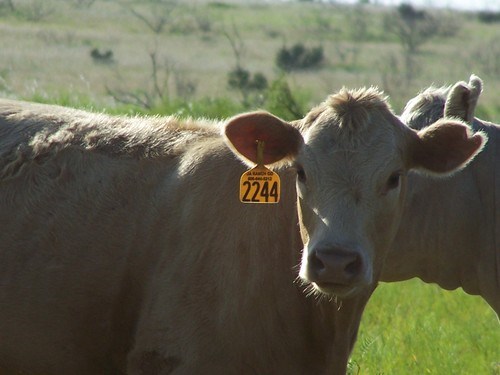We are always happy to answer customer questions at any time. This week, one of our clients asked:
“My veterinarian said my sheep have coccidiosis. What is that and what do I do about it?”
Coccidiosis is a condition caused by organisms of the Eimeria species of microorganisms. Coccidiosis can be a costly problem in livestock in that in early infestations the damage to the epithelial cells on the walls of the small intestine reduces the absorption of nutrients. Later, heavy infestations can result in permanent damage to the lining of the small intestine, anemia from blood loss from the damaged lining, and death if the infestation is severe enough.
The first symptoms you will see are diarrhea with a small amount of blood in it, and animals that aren’t gaining as well as they should. These are symptoms that are easily missed unless you are alert to look for coccidiosis. Most of the time, a severe case will show itself by a lot of blood in diarrhea, and you can assume the entire flock, or herd, is infected with the coccidia. Confirmation of coccidiosis is by looking at a floatation sample of the animal’s manure under a microscope and identifying the Eimeria organisms.
Young animals are more susceptible to problems with coccidia. If they survive their infestation, they seem to develop some level of immunity to damaging levels of coccidiosis later in life. However, mature animals can still develop some high infestations occasionally.
Feedlot situations, or high stocking rates seem to enhance the possibilities of livestock acquiring a coccidia infestation, as the organisms are many times present in the digestive tract of mature animals, and being shed onto the ground. As younger animals pick up the coccidia either in water or feed contaminated by manure, the organisms reproduce, are deposited on the ground in manure, and infect other animals.
There are two approaches to treating animals with coccidiosis. One is to put a coccidiastat such as Corid in the water source of the animals for five days. If you use this approach, you will need to be sure the water source is a closed source. By closed source, I mean that after you mix the Corid in the water, no fresh water can come into the trough until you mix another batch. Otherwise, the coccidiastat is constantly diluted as fresh water is allowed into the trough, and the concentration is not sufficient to eliminate the coccidia.
If you choose to combat the coccidia with a feed additive, you have three to choose from for cattle, and two for sheep and goats. There is not a Food and Drug Administration (FDA) approval for any coccidia treatment for deer. So if you try to treat deer, you should probably use the same treatment for goats.
Decoquinate, marketed as Deccox, is the one coccidiastat for use in feeds that is approved for cattle, sheep, and goats. It is the safest of the feeds, as it is not toxic to any class of animals. Decoquinate should be fed at the rate of 22.7 milligrams for each 100 pounds of body weight. For instance, a 90 pound goat would need 20.43 milligrams of decoquinate per head per day.
To control coccidiosis, all of the medications must be fed for 28 days to break the life cycle of the Eimeria organisms. If you don’t feed the medication long enough to disrupt the life cycle, your animals can be re-infected again and require treatment again.
Monensin, marketed as Rumensin, is approved by the FDA for cattle and goats. It should must be fed at the rate of 42 milligrams per 100 pounds of bodyweight for 28 days for cattle. However, cattle should not receive more than 200 milligrams per head per day.
Goats are only approved for a feedlot level of 20 grams of monensin per ton of mixed feed. On a per head basis, the same 42 milligram per 100 pounds of bodyweight should be sufficient to control coccidiosis.
Lasalocid, marketed as Bovatec, is approved for cattle and sheep. Cattle should be fed 45 milligrams per 100 pounds of body weight with a maximum of 360 milligrams per head per day for 28 days.
Sheep should 20 to 30 grams per ton of mixed feed in confinement situations, or 15 to 70 milligrams per head per day for 28 days.
Confused yet? Let your feed company nutritionist help to figure out how much of any of the coccidiastats to be included in your feed. The critical part of the treatment is that your animals get the amount of medication they need for the full 28 days.
Do not use a confinement type of feed made for full feed of your animals, as a supplement just because it has a coccidiastat in it. If you feed your goats 1 pound per head per day of a feed designed to be fed at 3 pounds per day, you are not going to get enough of the coccidiastat in your animals to control the problem.
Underfeeding the medication is like throwing money away. These medications are not cheap, but when fed to the proper levels, they can be the best money you spend all year, if they correct the problem.
Coccidiosis can be a serious economical problem for livestock producers. Watch for it and treat it properly to minimize your losses.
Got a question? Ask our experts! Message us on Facebook.
Interested in our products? Click here.


